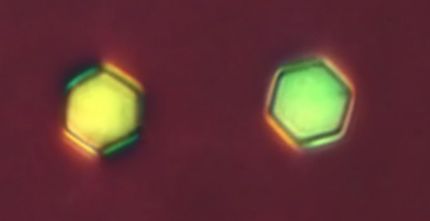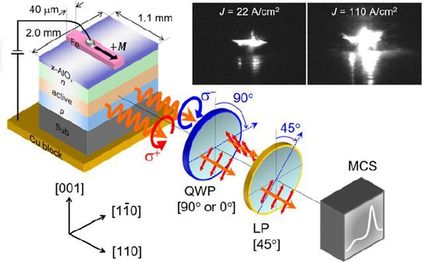A better way to control crystal vibrations
Advertisement
The vibrational motion of an atom in a crystal propagates to neighboring atoms, which leads to wavelike propagation of the vibrations throughout the crystal. The way in which these natural vibrations travel through the crystalline structure determine fundamental properties of the material. For example, these vibrations determine how well heat and electrons can traverse the material, and how the material interacts with light.
Now, researchers have shown that by swapping out just a small fraction of a material's atoms with atoms of a different element, they can control the speed and frequencies of these vibrations. This demonstration provides a potentially simpler and cheaper way to tune a material's properties, allowing for a wide range of new and more efficient devices, such as in solid-state lighting and electronics.
The natural vibrations of a crystalline material travel as particles called phonons. These phonons carry heat, scatter electrons, and affect electrons' interactions with light. Previously, researchers controlled phonons by dividing the material into smaller pieces whose boundaries can scatter the phonons, limiting their movement. More recently, researchers have engineered nanoscale structures, such as nanowires, into the material to manipulate phonons' speed and frequencies.
A team of researchers from the University of California, Riverside and the University of California, San Diego has now found that by doping -- introducing different elements into the material -- you can control phonons. The researchers doped aluminum oxide with neodymium, which replaces some of the aluminum atoms. Because neodymium is larger and more massive than aluminum, it alters the vibrational properties of the material, changing how phonons can travel.
"It introduces distortion to the lattice, which persists over a large distance compared to the atomic size, and affects the whole vibrational spectrum," said Alexander Balandin of the University of California, Riverside.
Using a new method of producing evenly doped crystals and new sensitive instruments to measure the phonon spectrum, the researchers showed, for the first time, that even a small number of certain dopants can have a big impact. "This approach provides a new way of tuning the vibrational spectrum of materials," Balandin said.
Previously, researchers assumed that any significant effect on phonons would require a very high concentration of dopants. But, the team found that doped aluminum oxide with a neodymium density of only 0.1 percent was enough to lower the phonon frequency by a few gigahertz and the speed by 600 meters per second.
Boosting phonon speeds increases a material's thermal conductivity, allowing tiny transistors to cool faster. Slowing phonons, on the other hand, would be useful in making more efficient thermoelectric devices, which convert electricity into heat and vice versa. Furthermore, in optical devices such as light-emitting diodes, slowing phonons and suppressing phonon interactions with electrons would mean more energy is used to produce photons (light) and less is lost as heat.
The researchers are now applying their strategy to other dopants and materials, such as gallium arsenide, with an eye toward developing energy-efficient devices, Balandin said.
Original publication
Fariborz Kargar and Elias H. Penilla and Ece Aytan and Jacob S. Lewis and Javier E. Garay and Alexander A. Balandin; "Acoustic phonon spectrum engineering in bulk crystals via incorporation of dopant atoms"; Appl. Phys. Lett.; 2018


































































